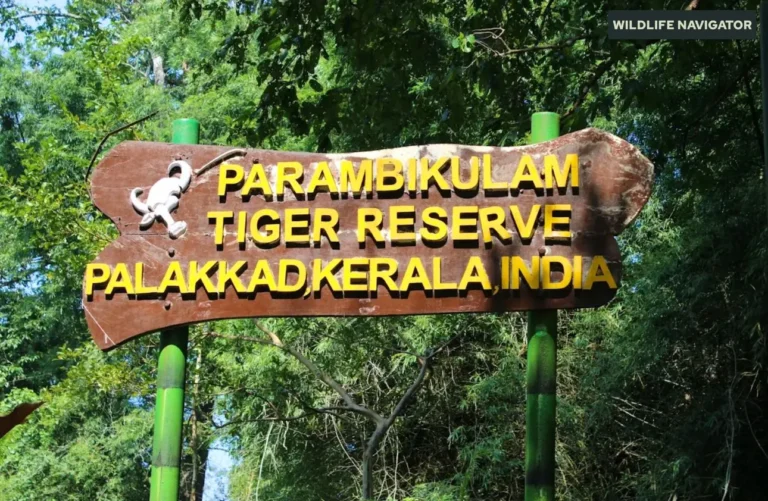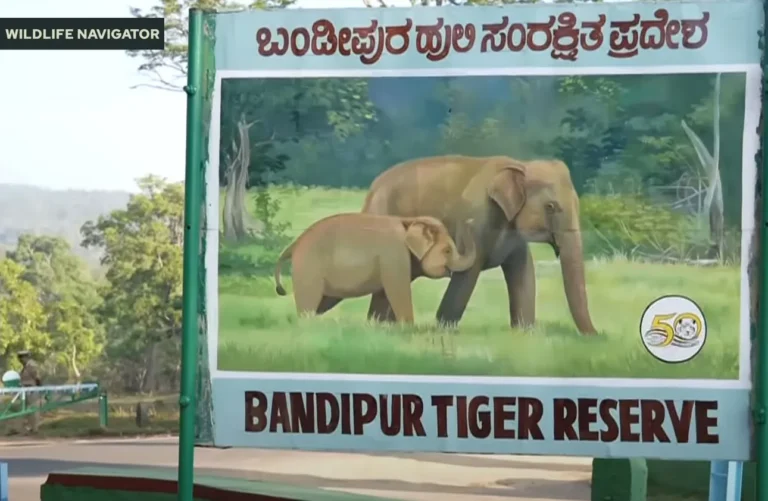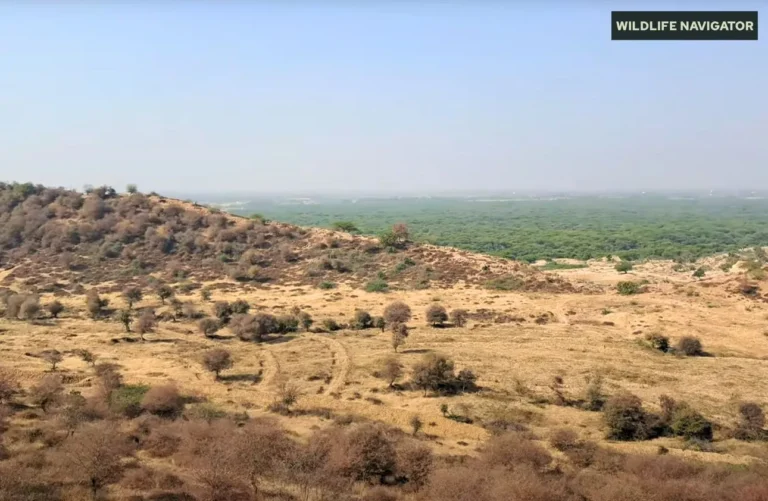Nanda Devi National Park – Chamoli, Uttarakhand

Nanda Devi National Park stands as one of India’s most spectacular wilderness regions and is among the most remarkable national parks in India, located in the Chamoli district of Uttarakhand. Enclosed within the towering Himalayan peaks, this UNESCO World Heritage Site is known for its breathtaking alpine scenery, high-altitude biodiversity, and a sense of untouched purity that few other places can match. The park forms part of the larger Nanda Devi Biosphere Reserve, which also includes the famous Valley of Flowers National Park, together representing the ecological richness of the Western Himalayas.
The park gets its name from Nanda Devi Peak, the second-highest mountain in India, rising to 7,817 meters. The mountain and its surrounding sanctuary have long held sacred and ecological importance, symbolizing both natural grandeur and spiritual reverence for local communities.
Nanda Devi National Park is not just a destination—it’s a rare glimpse into a world where nature thrives almost undisturbed. The region’s restricted access has helped preserve its fragile ecosystems, making it a haven for endangered species such as the snow leopard and Himalayan musk deer. For trekkers, wildlife enthusiasts, and conservationists, the park represents one of the most pristine and inspiring landscapes in the Indian Himalayas.
Whether you seek adventure among steep ridges or simply wish to experience the quiet majesty of the high mountains, Nanda Devi offers an unforgettable encounter with the wild heart of Uttarakhand.
Geography and Landscape
Location and Setting
Nanda Devi National Park is situated in the Chamoli district of Uttarakhand, forming the inner core of the Nanda Devi Biosphere Reserve. It lies within the Garhwal Himalayas, surrounded by a ring of lofty peaks that rise dramatically above deep valleys and glacial streams. The park covers an area of approximately 630 square kilometers, and its boundaries are defined by natural barriers such as steep ridges and gorges that protect its delicate ecosystem.
Topography and Elevation
The park’s elevation ranges from about 1,800 meters to over 7,800 meters, making it one of the most vertically diverse landscapes in India. At its heart stands the majestic Nanda Devi Peak (7,817 m)—the second-highest mountain in India after Kangchenjunga. The rugged terrain includes glaciers, alpine meadows, rocky outcrops, and snow-clad summits, creating a striking contrast between lush lower valleys and stark upper slopes.
Major Valleys and Rivers
Three main valleys shape the park’s geography: the Rishi Ganga Valley, the Dhauliganga Valley, and the Pushpawati Valley. The Rishi Ganga River, originating from the glaciers near Nanda Devi, carves through steep gorges before merging with the Dhauliganga. These valleys form crucial wildlife corridors and sustain the park’s rich vegetation through glacial meltwater.
Climate and Seasons
The climate of Nanda Devi National Park varies dramatically with altitude. Lower regions experience cool summers and cold winters, while higher zones remain snowbound for most of the year. The best time to visit is between May and October, when the snow melts, trails open, and the alpine meadows come alive with vibrant wildflowers. During the monsoon, the park receives moderate rainfall, which nourishes the vegetation but can make trekking routes challenging.
Visual Appeal
The landscape of Nanda Devi National Park offers some of the most awe-inspiring mountain scenery in the Himalayas. With towering cliffs, hanging glaciers, and endless vistas of snow peaks, it feels like a realm sculpted by nature’s purest forces. Every step through the park reveals a different shade of wilderness—from rocky passes to serene meadows filled with blooms under the gaze of the mighty Nanda Devi.
History and Recognition
Early Exploration
The first detailed exploration of the Nanda Devi region took place in the 1930s, when British mountaineers Eric Shipton and H.W. Tilman successfully penetrated the inner sanctuary through the challenging Rishi Ganga gorge. Their expedition revealed the remarkable beauty and isolation of the area, establishing it as one of the world’s most pristine mountain ecosystems.
Formation of the National Park
Recognizing its ecological and cultural importance, the Indian government declared Nanda Devi a National Park in 1982. To protect its fragile environment, access was strictly limited, allowing the ecosystem to recover from earlier human impact caused by mountaineering and grazing.
UNESCO World Heritage Site
In 1988, Nanda Devi National Park, along with the nearby Valley of Flowers, was inscribed as a UNESCO World Heritage Site. This status acknowledges its outstanding natural beauty and exceptional biodiversity.
Conservation Milestone
In 2004, the area was expanded into the Nanda Devi Biosphere Reserve, reinforcing its global significance as a conservation zone. Today, it stands as a model of restricted, sustainable protection—where nature is given the rare privilege to thrive undisturbed.
Flora of Nanda Devi National Park
Nanda Devi National Park shelters a remarkable variety of alpine and subalpine vegetation shaped by altitude, climate, and terrain. The flora here changes dramatically with elevation, creating distinct vegetation zones that sustain rare and delicate Himalayan plant life.
Major Vegetation Zones
- Temperate Forest Zone (up to 3,000 m):
- Dominated by oak, fir, birch, and rhododendron.
- Dense canopy provides shelter for many animal and bird species.
- Mosses, ferns, and lichens thrive in moist, shaded areas.
- Sub-Alpine Zone (3,000–4,000 m):
- Characterized by stunted trees and dwarf shrubs.
- Juniper, birch, and rhododendron form thickets in this transition zone.
- Acts as a buffer between forests and alpine meadows.
- Alpine Meadow Zone (above 4,000 m):
- Covered with vibrant seasonal flowers during summer.
- Notable species include Brahma Kamal (Saussurea obvallata), Blue Poppy, Primula, and Gentiana.
- Grasses and herbs dominate, supporting herbivores like bharal and musk deer.
Unique Features
- The park is known for its seasonal floral bloom between June and September, when meadows turn into colorful carpets.
- The Brahma Kamal, Uttarakhand’s state flower, grows in high-altitude meadows and symbolizes purity and resilience.
- Over 300 species of flowering plants have been recorded, many of which are rare or endemic to the Western Himalayas.
Fauna of Nanda Devi National Park

The rugged terrain and isolated environment of Nanda Devi National Park support a fascinating variety of wildlife, adapted to its harsh alpine conditions. From elusive predators to colorful birds, the park represents a vital refuge for Himalayan species that depend on undisturbed habitats.
Major Mammals Found
- Bharal (Blue Sheep) – Agile grazer found on rocky slopes and alpine meadows.
- Snow Leopard – Apex predator of the high Himalayas; rarely sighted but a key species for the ecosystem’s balance.
- Himalayan Musk Deer – Known for its musk gland; inhabits steep, forested slopes.
- Himalayan Tahr – A sturdy mountain goat often seen on rugged cliffs.
- Serow – A shy and solitary animal preferring dense forests and rocky ravines.
- Goral – Smaller mountain ungulate that thrives in mid-altitude grasslands.
- Common Langur and Himalayan Black Bear – Found in lower forested zones.
Birdlife
- Himalayan Monal – The vibrant state bird of Uttarakhand.
- Snow Partridge – Adapted to icy terrain, often spotted near snowline.
- Golden Eagle and Lammergeier – Majestic raptors soaring over ridges.
- Yellow-billed Chough and Himalayan Griffon – Frequent high-altitude dwellers.
Reptiles and Smaller Species
- Limited but includes cold-adapted lizards, small rodents, and insects crucial for the alpine ecosystem.
Trekking and Exploration
Nanda Devi National Park offers some of the most thrilling and pristine trekking experiences in the Indian Himalayas. Due to its ecological sensitivity, trekking is regulated, but the routes that are open provide a remarkable combination of adventure and natural beauty.
Access Points
- Joshimath – The main gateway town for treks into the park.
- Lata Village – Starting point for inner sanctuary treks, including the famous Rishi Ganga route.
- Dibrugheta and Reni – Key trailheads connecting to alpine meadows and high valleys.
Popular Trekking Routes
- Rishi Ganga Gorge Trek – Challenging trail through narrow gorges and high cliffs; ideal for experienced trekkers.
- Lata–Reni–Dibrugheta Trail – Scenic trek passing through meadows, forests, and streams; suitable for wildlife observation.
- Valley of Flowers Link Trek – Connects Nanda Devi with the Valley of Flowers, offering lush floral landscapes and high-altitude vistas.
Trekking Guidelines
- Permits Required – Access to the inner sanctuary requires official permission due to conservation regulations.
- Limited Group Size – To minimize human impact, trekking groups are restricted in number.
- Guides Recommended – Local guides enhance safety and provide knowledge about flora, fauna, and cultural sites.
Adventure Meets Conservation
- The treks provide an unmatched opportunity to witness glaciers, alpine meadows, and high peaks.
- Visitors must respect park regulations, carry back waste, and follow designated trails to ensure the ecosystem remains undisturbed.
Nearby Attractions
Nanda Devi National Park is surrounded by a wealth of natural and cultural attractions, making it an ideal destination for explorers and nature lovers.
Valley of Flowers National Park
- A UNESCO World Heritage Site adjacent to Nanda Devi.
- Famous for its vibrant alpine blooms during the monsoon season.
- Trekking through this valley offers a spectacular floral panorama and excellent birdwatching opportunities.
Hemkund Sahib
- A revered Sikh pilgrimage site located at 4,632 meters.
- Surrounded by glacial lakes and snow-capped peaks.
- Combines spiritual significance with scenic beauty, attracting trekkers and pilgrims alike.
Auli
- Known as a popular ski destination in winter.
- Offers panoramic views of the Nanda Devi peak and surrounding Himalayan ranges.
- Trekking and adventure sports are popular in summer months.
Badrinath Temple
- One of the Char Dham pilgrimage sites in India.
- Located within reach of the park, it draws both devotees and tourists.
- Highlights the blend of natural beauty and spiritual heritage in the region.
These attractions complement the park visit, offering diverse experiences from trekking and wildlife observation to spiritual and cultural exploration.
Accommodation Options
While the inner sanctuary of Nanda Devi National Park is strictly protected and off-limits for overnight stays, nearby towns and villages offer comfortable and eco-friendly accommodation for trekkers and tourists.
Joshimath
- Serves as the primary base for park access and treks.
- Offers hotels, guesthouses, and lodges with modern amenities.
- Options range from budget stays to mid-range hotels suitable for families and solo travelers.
Lata and Nearby Villages
- Small eco-lodges and homestays provide a closer experience to nature.
- Simple accommodations focus on local hospitality and minimal environmental impact.
- Ideal for trekkers preparing for early morning departures into the park.
Forest Rest Houses
- Managed by the Uttarakhand Forest Department.
- Provide basic lodging for trekking groups and research teams.
- Reservations are required in advance, and stays follow strict guidelines to reduce ecological disturbance.
Staying in these areas allows visitors to explore Nanda Devi safely while supporting conservation-friendly tourism.
Conclusion
Nanda Devi National Park stands as one of the most remarkable natural treasures of the Indian Himalayas. Its towering peaks, deep valleys, and diverse ecosystems create a rare environment where flora and fauna thrive undisturbed. The park’s strict conservation measures and UNESCO recognition have helped preserve its pristine beauty, making it a sanctuary for endangered species like the snow leopard, Himalayan musk deer, and bharal.
For trekkers, wildlife enthusiasts, and nature photographers, Nanda Devi offers unforgettable landscapes, challenging trails, and an intimate encounter with the high-altitude wilderness. Beyond its natural appeal, the region carries cultural and spiritual significance, with nearby pilgrimage sites and eco-tourism experiences enriching the visit.
Nanda Devi National Park exemplifies the delicate balance between adventure and conservation, reminding us of the importance of protecting these fragile ecosystems. Visiting the park is not just a journey into the Himalayas—it is an opportunity to witness nature in its purest form and contribute to the ongoing efforts to safeguard this global heritage.





